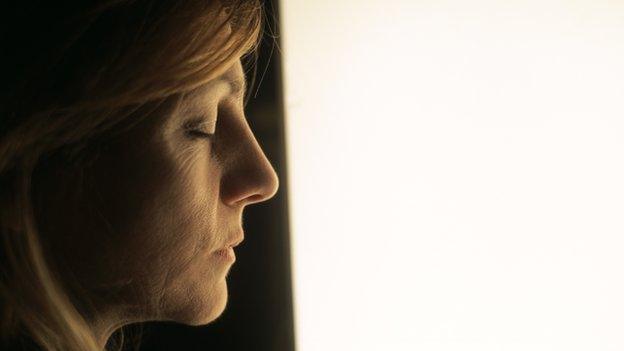Brain scans show cause of seasonal affective disorder
- Published

Scientists say they have identified the underlying reason why some people are prone to the winter blues, or seasonal affective disorder (SAD).
People with Sad have an unhelpful way of controlling the "happy" brain signalling compound serotonin during winter months, brain scans reveal.
As the nights draw in, production of a transporter protein ramps up in Sad, lowering available serotonin.
The work will be presented this week at a neuropsychopharmacology conference.
The University of Copenhagen researchers who carried out the trial say their findings confirm what others have suspected - although they only studied 11 people with Sad and 23 healthy volunteers for comparison.
Using positron emission tomography (PET) brain scans, they were able to show significant summer-to-winter differences in the levels of the serotonin transporter (SERT) protein in Sad patients.
The Sad volunteers had higher levels of SERT in the winter months, corresponding to a greater removal of serotonin in winter, while the healthy volunteers did not.
Winter depression
Lead researcher, Dr Brenda Mc Mahon, said: "We believe that we have found the dial the brain turns when it has to adjust serotonin to the changing seasons.
"The serotonin transporter (SERT) carries serotonin back into the nerve cells where it is not active - so the higher the SERT activity, the lower the activity of serotonin.
"Sunlight keeps this setting naturally low, but when the nights grow longer during the autumn, the SERT levels increase, resulting in diminishing active serotonin levels.
"Many individuals are not really affected by Sad, and we have found that these people don't have this increase in SERT activity, so their active serotonin levels remain high throughout the winter."
Prof Siegfried Kasper, of the European College of Neuropsychopharmacology, which this year is holding its annual congress in Berlin, said: "SERT fluctuations associated with Sad have been seen in previous studies, but this is the first study to follow patients through summer and winter comparisons.
"It seems to offer confirmation that SERT is associated with Sad."
Sam Challis, information manager at mental health charity Mind, said: "We don't yet know enough about how serotonin levels can be affected by light levels so this is quite an interesting, albeit small, study. We would welcome more research."
She said there was a range of treatments available for Sad, such as light therapy and cognitive behavioural therapy.
"We know that eating a balanced diet, cutting down on caffeine and getting some exercise can help, as can spending as much time as possible outdoors because - even when it's overcast - light will be higher than indoors."
Sad affects about two million people in the UK, and more than 12 million people across northern Europe.